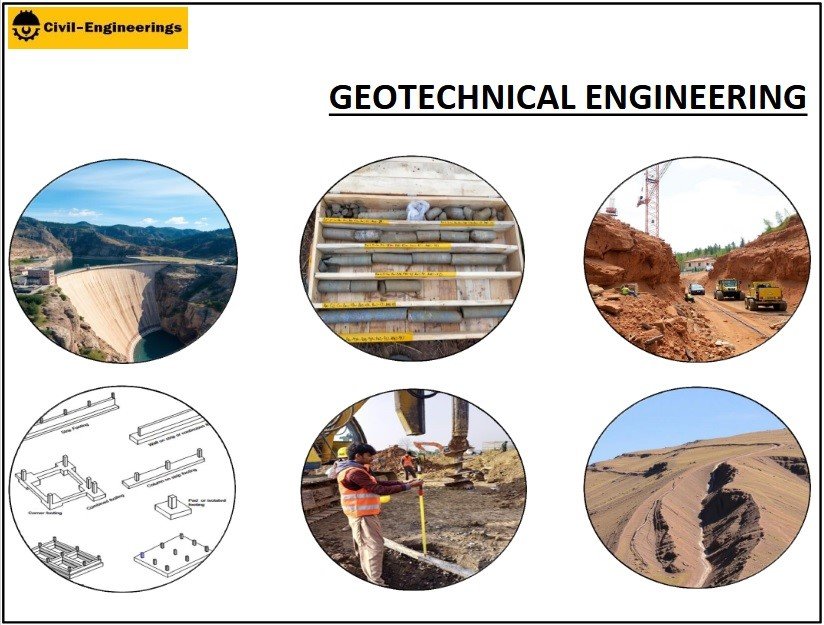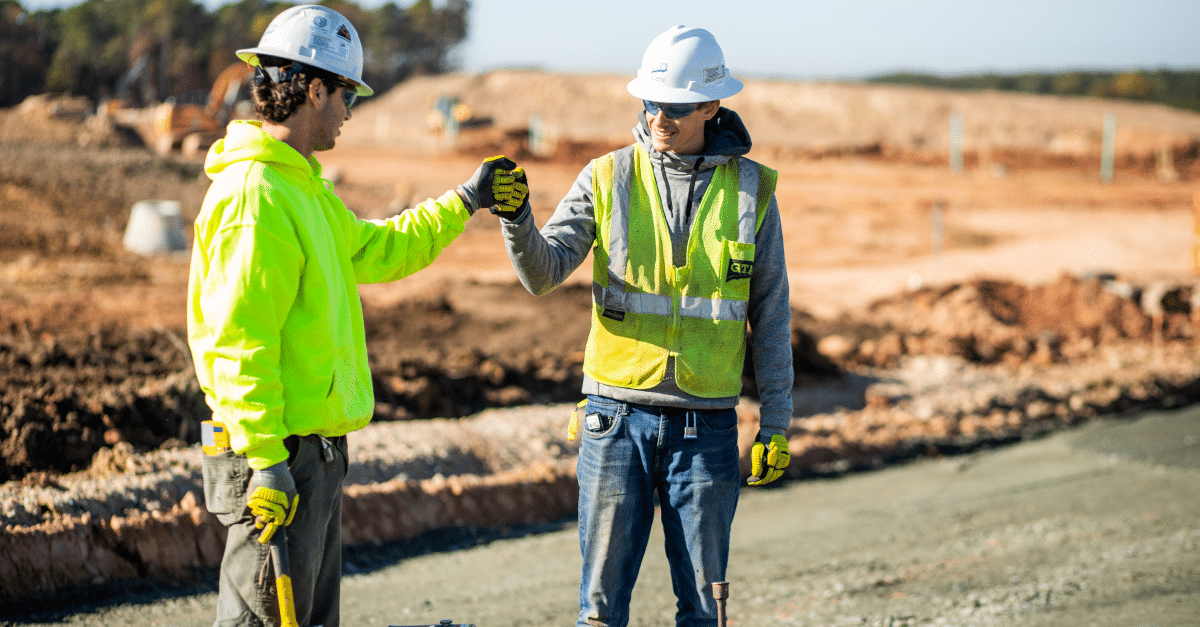Some Of Specialized Geotechnical Engineering Solutions
8 Easy Facts About Specialized Geotechnical Engineering Solutions Shown
Table of ContentsThe 5-Second Trick For Specialized Geotechnical Engineering SolutionsIndicators on Specialized Geotechnical Engineering Solutions You Should Know4 Simple Techniques For Specialized Geotechnical Engineering SolutionsThe Basic Principles Of Specialized Geotechnical Engineering Solutions
They perform site examinations, collect examples, execute research laboratory tests, and assess information to assess the viability of the ground for construction projects. Based upon their searchings for, geotechnical engineers supply referrals for foundation layout, incline security, maintaining structures, and reduction of geotechnical dangers. They collaborate with other professionals, such as designers, architectural engineers, and building and construction groups, to make sure that geotechnical considerations are integrated into the overall job design and execution.
Foundation Layout: Geotechnical engineers play a vital function in designing structures that can safely support the designated framework. They assess the dirt problems and load demands to figure out the proper foundation kind, such as shallow foundations (e.g., footings), deep structures (e.g., stacks), or specialized strategies like soil improvement. They think about elements such as settlement restrictions, bearing capability, and soil-structure communication to establish optimal foundation styles.
The Of Specialized Geotechnical Engineering Solutions
Right here are some kinds of geotechnical designers: Foundation Designer: Foundation designers concentrate on making and evaluating structures for structures - Specialized Geotechnical Engineering Solutions. They assess the dirt conditions, tons demands, and site characteristics to determine the most proper structure type and design, such as shallow structures, deep structures, or specialized strategies like pile foundations
They carry out area testing, collect samples, and examine the gathered information to characterize the dirt homes, geologic developments, and groundwater problems at a site. Geotechnical Instrumentation Engineer: Geotechnical instrumentation designers concentrate on tracking and gauging the habits of dirt, rock, and frameworks. They set up and maintain instrumentation systems that keep track of factors such as dirt negotiation, groundwater levels, slope movements, and structural variations to examine efficiency and provide very early cautions of possible problems.
In the workplace atmosphere, geotechnical designers utilize specialized software devices to carry out computations, create layouts, and examine information. Specialized Geotechnical Engineering Solutions. They prepare reports, testimonial task requirements, communicate with clients and employee, and coordinate task tasks. The office setup offers a helpful atmosphere for research, evaluation, and partnership with other professionals entailed in the job
They frequently visit job sites to perform site examinations, analyze geotechnical problems, and gather information for evaluation. These brows through entail traveling to different locations, sometimes in remote or difficult terrains. Geotechnical designers might do soil sampling, conduct tests, and monitor building and construction tasks to make sure that the geotechnical elements of the job are being applied properly.
The Buzz on Specialized Geotechnical Engineering Solutions
Geotechnical designers likewise function in specialized geotechnical labs. In these centers, they perform experiments, carry out examinations on dirt and rock examples, and assess the design homes of the products. Geotechnical research laboratory designers function extensively in these atmospheres, taking care of screening devices, running tools, and recording information. They collaborate with other research laboratory staff to make sure precise and reputable screening results.
Retaining Walls: Producing walls that hold back soil to stop landslides and offer stability on sloped surfaces. Embankments and Earthworks: Designing embankments for roads, railways, and dams to guarantee they stay secure under anxiety. The mining industry relies heavily on geotechnical design to make certain the safety and security and durability of its operations.
With this in mind, we have developed our program to prepare pupils for success. The Geotechnical Design program at the University of Delaware uses chances for sophisticated research and research study in: Soil and rock auto mechanics Soil-structure communication Integral modeling Computational geomechanics Structure and planet structures design Ground renovation Slope stability and landslide stabilization Liquefaction of soils and earthquake engineering Lab characterization of geomaterials and dirt support Environmental geotechnics Provided the strong demand for improvement to our nation's infrastructurethe American Society of Civil Designers gave the U.S.
Geotechnical design is a branch of civil engineering; nevertheless, it involves utilizing clinical techniques and principles to gather and interpret the physical residential or commercial properties of the ground. Geotechnical engineers are associated with all stages of the layout of structures, from principle to building. Their job is important in the layout and preparation procedure as they examine the integrity of dirt, clay, silt, sand, and rock, before construction starting.
The 7-Minute Rule for Specialized Geotechnical Engineering Solutions
This is followed by a ground investigation based on the searchings for of the desk research study and includes trial pitting and tasting to uncover any kind of possible concerns. Geotechnical engineers work within multidisciplinary teams, supported by intermediate and jr designers as well as by CAD professionals. As an elderly geotechnical designer on a hydro plant task, helpful site tasks may include taking part in technological evaluations (e.g., peer evaluations), tailings clog examinations, dam safety and security evaluations, and various other research studies connected to the design and construction of mine waste facilities.
While some specialists are experts only in geotechnics, others may function under titles like engineering rock hound or ground engineer within similar capabilities. As a geotechnical designer, you'll require to: develop and preserve relationships with customers and various other professionals associated with the site, throughout each projectmaintain safety and security standards on website be mindful of price implications when you make recommendationsstudy geological maps and airborne photographs from a variety link of resources and from various time periodsexamine building and construction plans to see just how possible they are based on your understanding of the siteinvestigate risks or geological threats for the sitesearch for eco delicate functions, such as landfill begin to create accurate and expository ground modelsplan area investigationsdrill and analyse examples of bedrock, dirt, groundwater and extra products oversee various other professionals on sitesolve technological why not find out more issues as they occur, such as unanticipated structures at drill sitesmonitor conditions throughout and after building to ensure frameworks are steady in the brief and lengthy termadd information gathered on site to your initial researchcreate geotechnical estimations, illustrations, and two or three-dimensional computer system models analyzing the datamake referrals regarding the recommended use the website.
There are great deals of opportunities to fulfill new people, as you'll work with a variety of specialists at every site. The job can be stressful as you may be liable for the security of others while on website. There is likewise a high level of monetary obligation, as the suggestions you make can have severe price ramifications.
